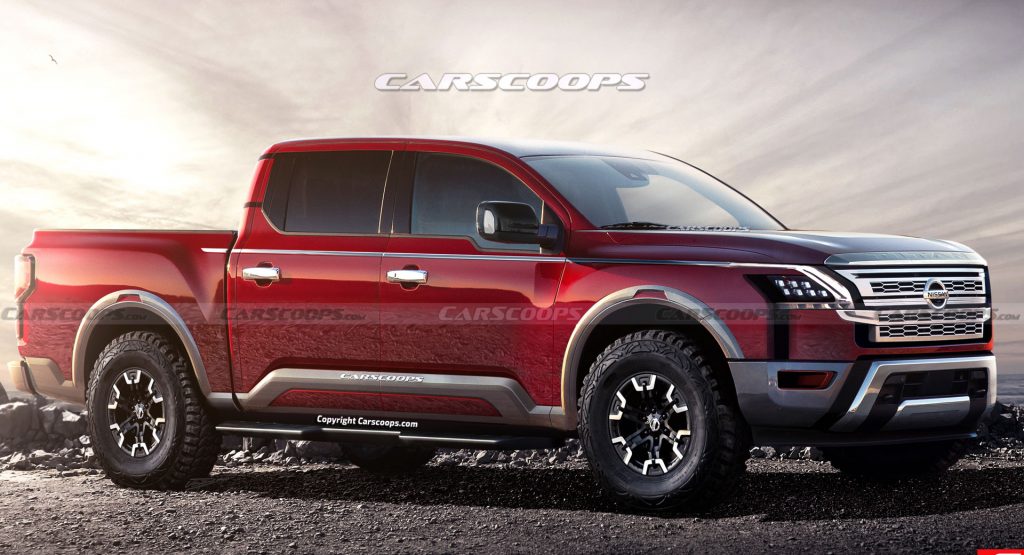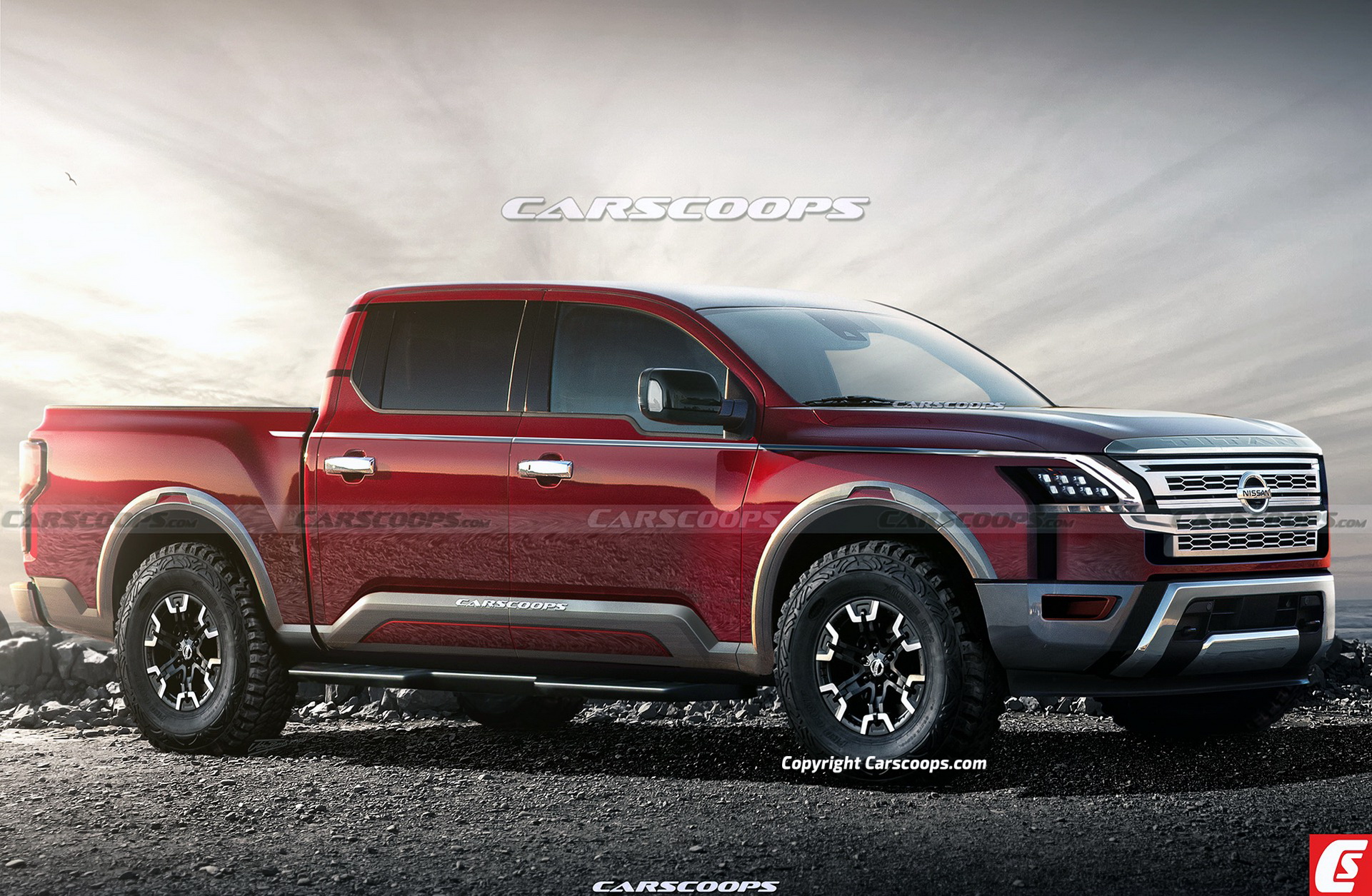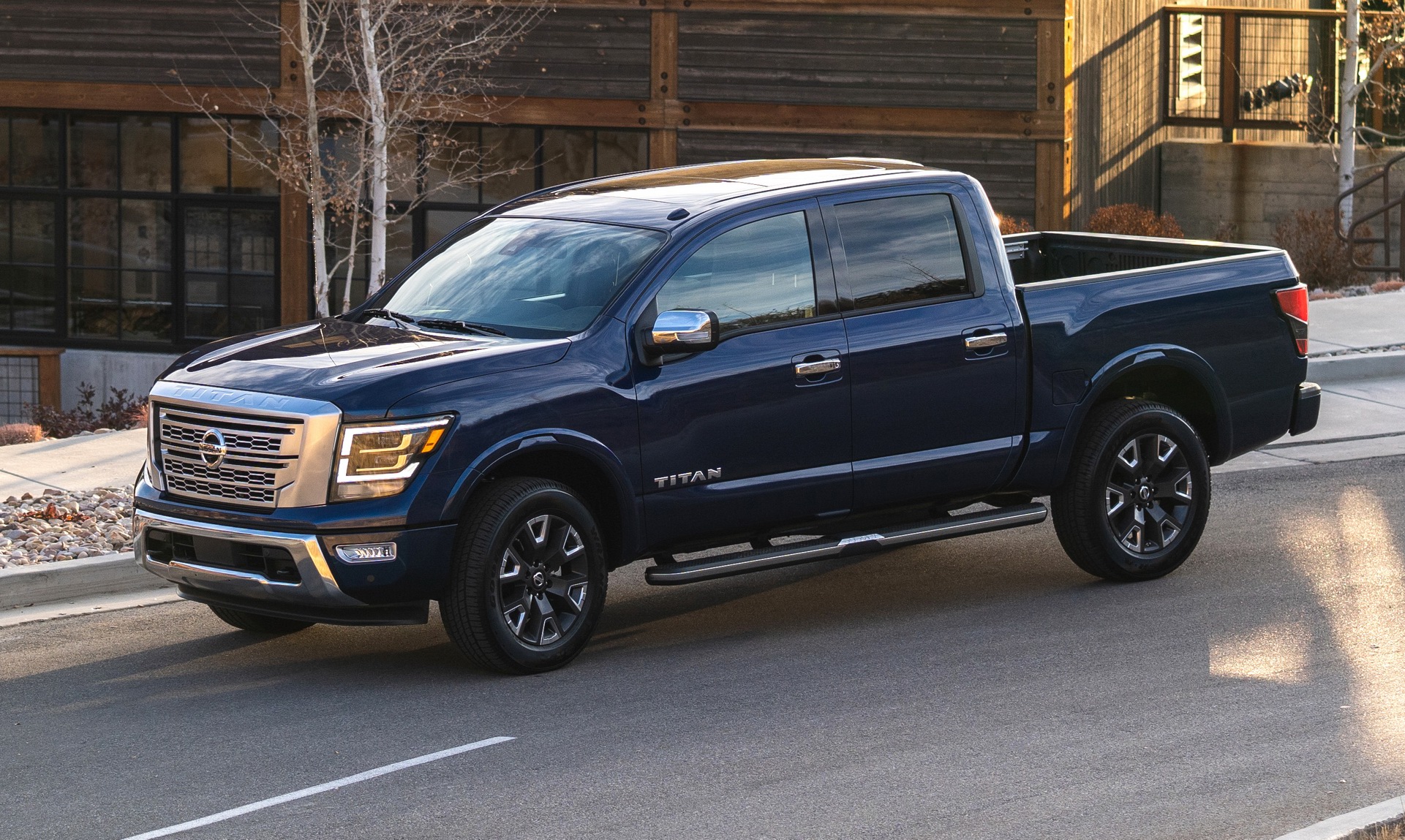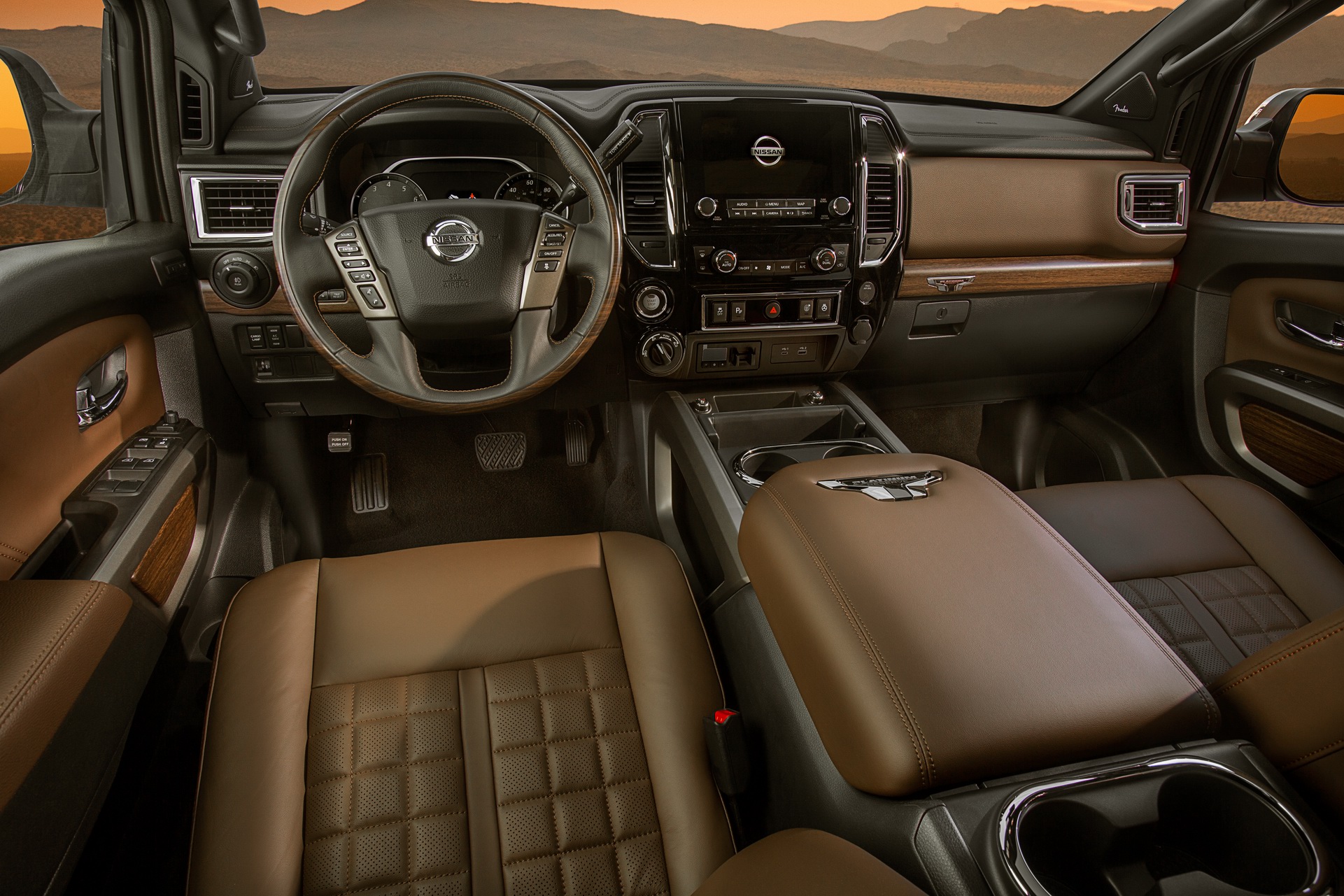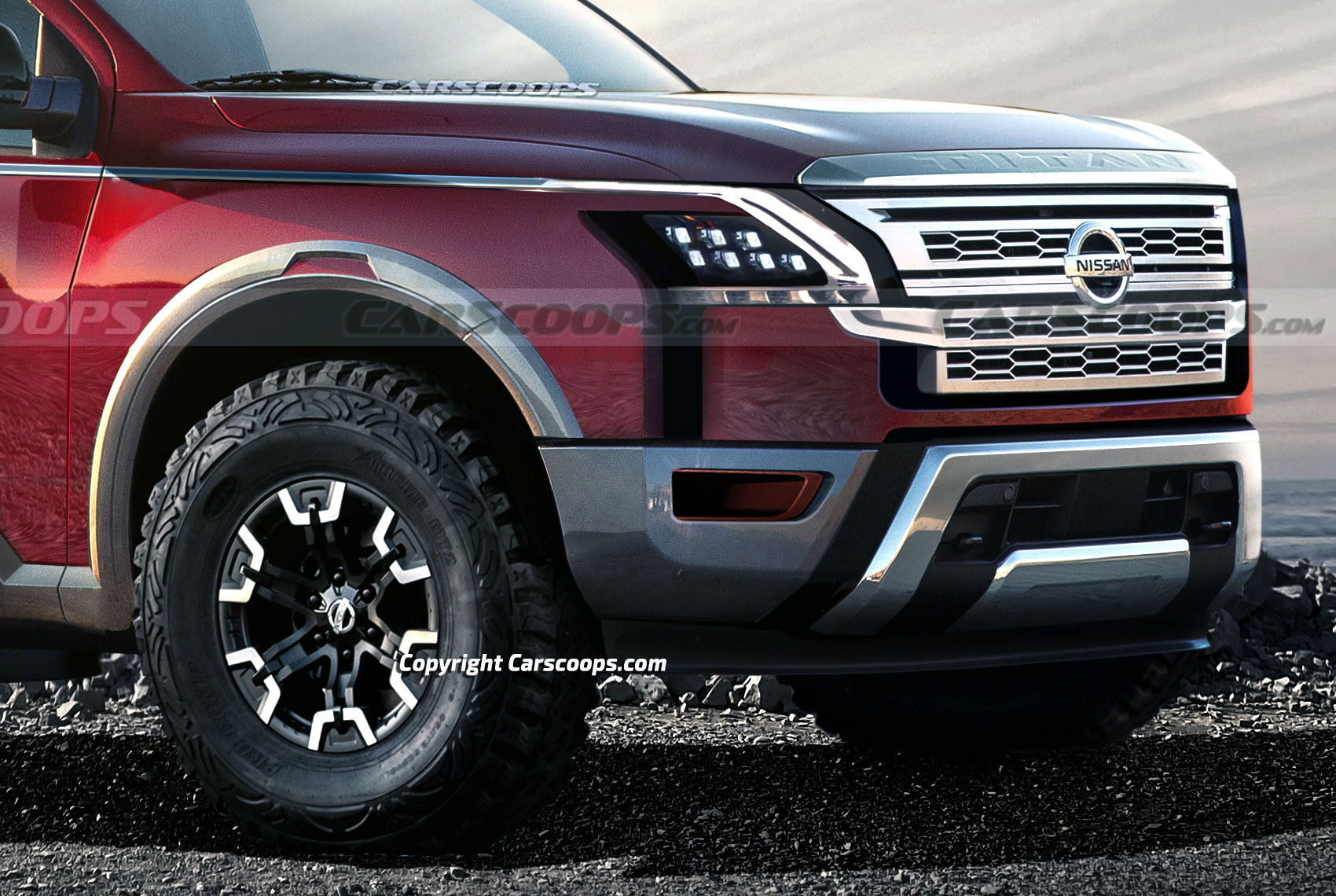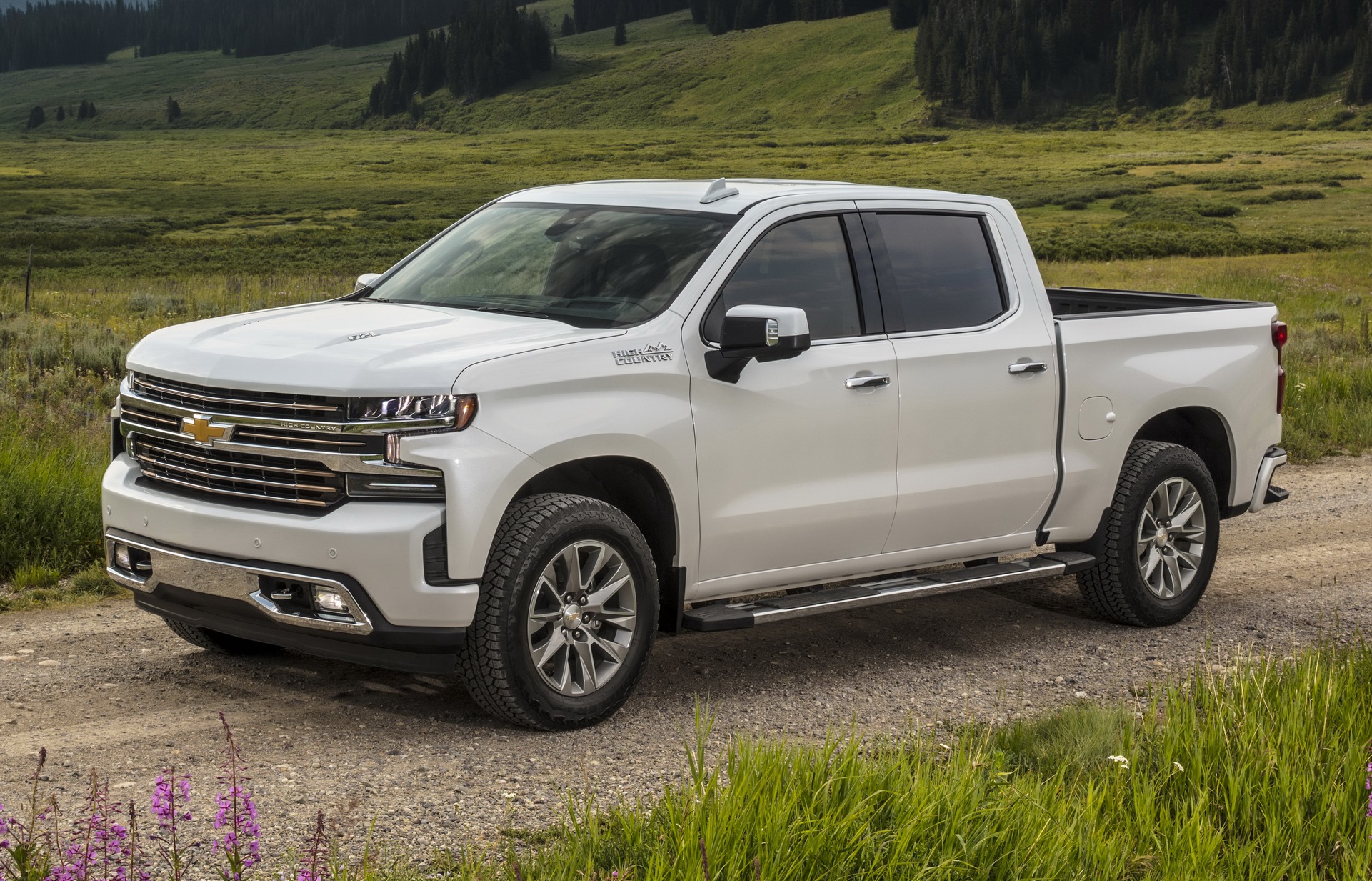These illustrations are made by CarScoops’ artist Josh Byrnes. They are speculative drawings that are neither related to or endorsed by Nissan.
Nissan’s foothold in the medium pickup truck segment might be well with its Frontier and Navara offerings, but its Titan full-size truck is an entirely different story. Sales of the large truck dropped to a mere 26,441 units in 2020 – a number absolutely hammered by the likes of the Ford F-150 (787,422 deliveries), Ram’s trucks (563,676) and Chevy’s Silverado (594,094).
So how could Nissan reverse its poor fortunes with the Titan? Well, we’ve come up with our own illustrative study that showcases how the next-generation version could look like and what technology/features it needs to better compete with the dominant trio from Ford, GM and Ram.
Read: This Is Nissan’s Bigger And Badder All-New 2022 Frontier Mid-Size Truck
Industrial Looks
Styling of the current Titan ticks most of the usual boxes; lots of chrome, a big cab and a face like Hank Hill’s. But it doesn’t really push the visual envelope far enough to lure buyers from rivals. This study remedies this by applying a dynamic, industrial aesthetic that stands out from its more conservative competitors.
An imposing satin-chrome grille flanked by interlocking LED headlamps dominates the powerful front end. For a unique point of difference, the DRL’s sweep up and over along the chiselled fenders before transitioning into a horizontal chrome strip that connects with the bed. A lower roofline exudes aerodynamic prowess, as do the bold fenders and color-coded lower cladding. The rear features monolithic LED tail lights with ‘Titan’ stamped into the powered tailgate.
A Nicer Place To Work
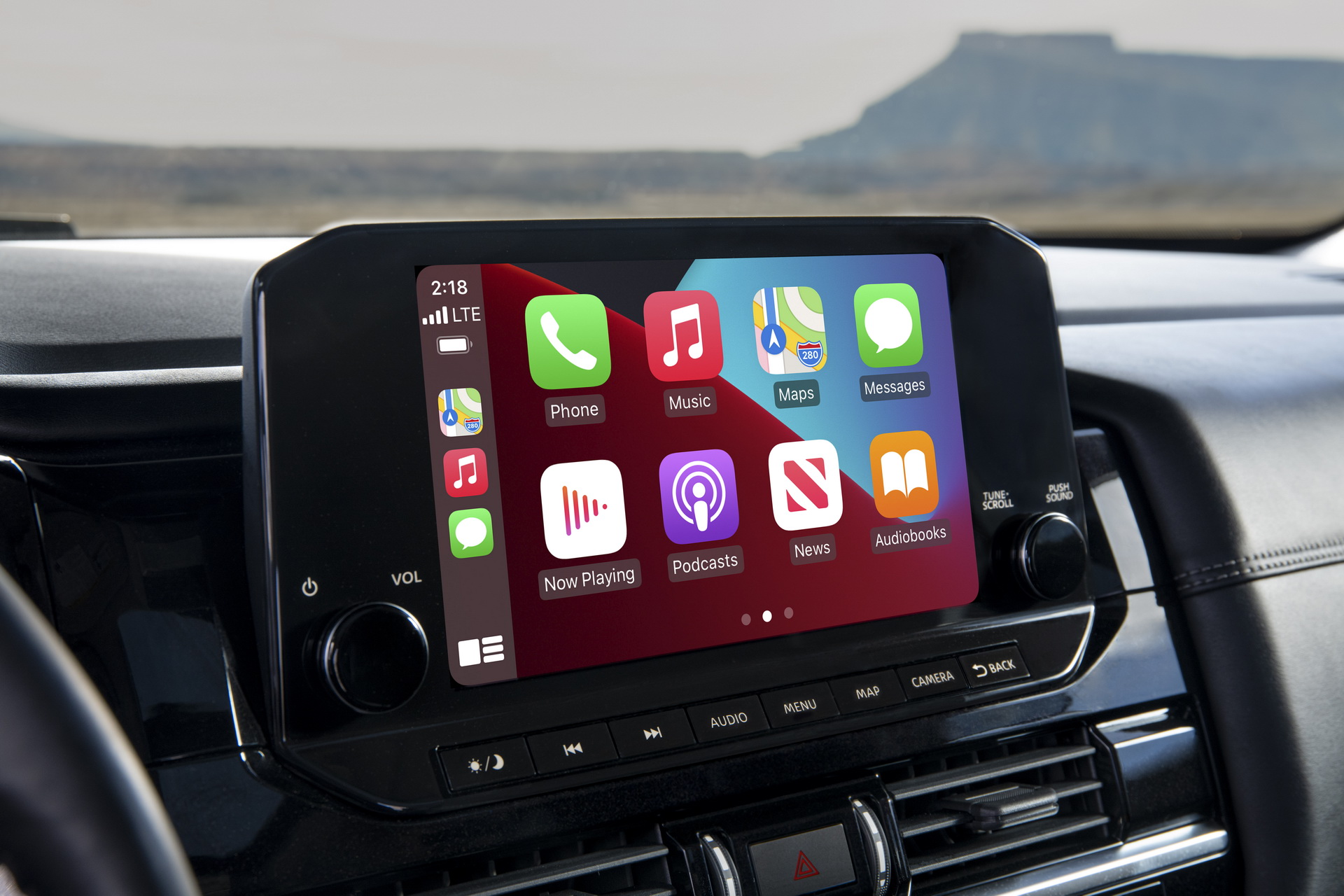
Nissan would definitely need to up its technology game if the Titan has any chance of going against the Big 3’s trucks
A redesigned cabin should mix the best qualities of the new Nissan Rogue and Ariya EV with a luxurious, workman-like atmosphere. Think acres of leather-effect surfaces and highly-crafted real wood inlays with ambient lighting. In front of the driver, sitting pride-of-place, would be a 12.3-inch digital instrument cluster, a heads-up display, and a sharp portrait-orientated OLED infotainment system.
See Also: Everything We Know About Chevrolet’s Future Electric Pickup Truck
Amazon Alexa integration and over-the-air updates help up its technology game, as does Nissan’s ProPILOT 2.0 driver-assist system. The latter uses multiple cameras, allowing for hands-off driving along a predefined route for more relaxed highway stints. Practicality would be first and foremost with stowaway rear seats, a console workstation and numerous power outlets with up to 240V on tap in EV versions.
Potent Performance
The current truck uses a 400 hp 5.6-litre V8; we expect this soldier on, albeit in updated form, for a few more years. However, to keep pace with its rivals, a 400 hp (298kW) 3.0-litre twin-turbo V6 from the Infinity Q60 could be electrified in either hybrid or plug-in hybrid guise to improve fuel economy and low-down torque.
An all-electric version might just be the ticket to bring the fight to GMC Hummer and F-150 Lightning. A recent report claimed that Nissan is already in discussions with Hercules Electric Vehicles about the possibility of buying electric powertrains for use in the Titan. Armed with a 150 kWh lithium-ion battery pack and dual motors feeding 580 hp to all four wheels, it would make for one seriously rapid truck indeed. Fast-charging up to a rate of 300 kW should be a priority, as would bi-directional charging – also known as vehicle-to-grid (V2G) or vehicle-to-home (V2H) charging.
Pretty Stiff Competition
Truck buyers are an incredibly loyal bunch, and luring them into a Titan sale will be no easy task. Nissan needs to conquer rivals such as the all-new Toyota Tundra, Chevrolet Silverado, Ram 1500, Tesla Cybertruck, GMC Hummer EV, Rivian R1T and Ford F-150.
See: First Official Photo Of Toyota’s 2022 Tundra Pickup Truck
There has been no firm indication when the next Titan will debut – the company has already pulled out the current model from Canada while continuing in the States. However, rumors suggest it’ll be 2023-2024 at the very earliest.
Let us know what you think of this design study and what you’d like to see on the next-generation Titan by sharing your thoughts in the comments below.




